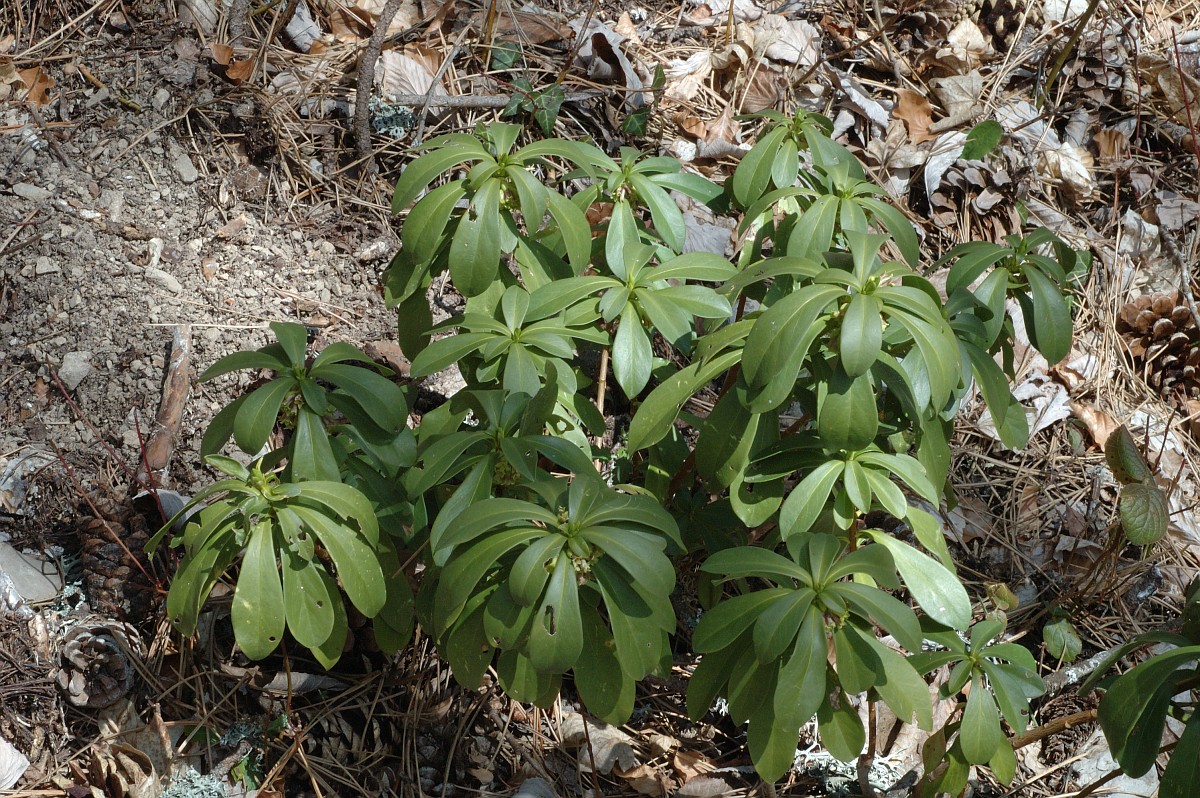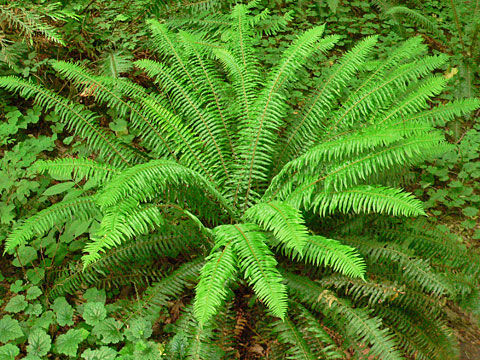Introduced species: Spurge Laurel (Daphne laureola)
Characteristics: Spurge laurel is a slow-growing, shade-tolerant, long-lived evergreen shrub from Europe and the Mediterranean region. It can grow in a wide range of conditions, but it thrives in full to partial shade and well-drained soils. The berries, leaves and bark are poisonous to humans, cats and dogs; handling the plant can cause contact dermatitis. The plant looks somewhat like a small tree, 2 to 4 feet tall, with dark green, shiny leaves densely whorled near the top of the stem. The flowers, which appear from late January to late March or early April, are small and inconspicuous, light green with orange stamens, in clusters of 2 to 10 at the base of the leaves, and particularly fragrant at night. The fruits are oval-shaped black berries, produced in early summer.
Spread: Spurge laurel’s primary means of spread is by birds and rodents eating the berries; it can also spread locally by root sprouts.
Control: Once established, this plant is very difficult to eradicate. Seedlings and young plants can be hand-pulled. Larger plants can be pulled with a weed wrench or similar tool, but be sure to remove all of the root to avoid re-growth from root sprouts. For large infestations, young plants (up to three years old) can be controlled fairly effectively (up to 95% mortality) with a weed whip or similar tool by cutting the plant off close to ground level. Due to the irritating toxins in the sap, fruit and leaves, wear gloves and other protective clothing when removing or cutting spurge laurel. After removal, the area should be monitored for new seedlings and covered with a deep mulch.
Native Replacements: Sword fern (Polysticum munitum) is an excellent evergreen native for shady areas, with elegant, bright-green foliage; Oregon grape (Mahonia nervosa) will do well in partial shade, and provides glossy, dark-green leaves and bright yellow flowers in spring.



